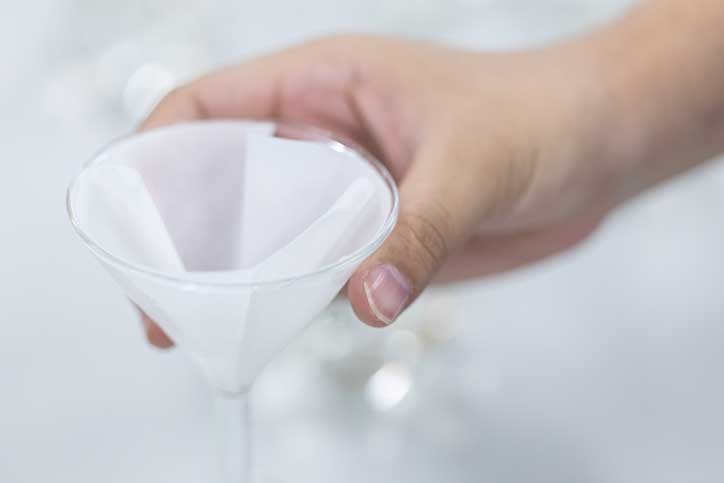What are the main filtration techniques used in the laboratory?
9 de November de 2023Filtration is a very common technique for separating solid particles from a liquid, by passing the solution through a porous material chosen depending on the size of the particles. The particles are primarily separated by mechanical retention: particles larger than the material’s pore size will be retained, as they cannot pass through the pores, while smaller particles will permeate through.
Filtration techniques plays an important role in areas such as the pharmaceutical, chemical industries, food and beverage, environmental monitoring, water monitoring and in research.
There are a lot of different laboratory filtration techniques and methods depending on the requirements and objective:
General gravity filtration
The most common and basic method used in laboratories is gravity filtration, which is driven by the force of gravity and only requires a filter paper, funnel and beaker.

Vacuum filtration
A variation of the previous method involves applying a vacuum during filtration to accelerate the solution’s passage through the filter or to separate smaller particles. This process employs a filter paper, a Büchner funnel, a Kitasato flask, a perforated rubber stopper and a vacuum pump.
Syringe filtration
Liquids can be filtered by applying pressure using a syringe equipped with a syringe filter. This technique is used to filter very small volumes or when a very high degree of purity is required, typically for liquid chromatography.
Mobile-phase filtration
Mobile-phase filtration degasses and removes any particles from the mobile phase, stabilising the baseline and ensuring accurate results. This technique can be done with cellulose ester or nylon membranes following the traditional process, or alternatively with stainless steel filters applying a method that extracts the solvent from the bottom of the vessel.
Membrane filtration for microbiology
Membrane filtration uses membrane filters to determine whether or not a solution contains bacterial microorganisms. This technique requires a suitable funnel, a filtration ramp and a vacuum pump. Once the liquid has been filtered, the membrane is transferred to a plate with culture medium and incubated to promote the growth of the bacterial colonies.
Filtration with extraction cartridges
Extraction cartridges are mainly used with the Soxhlet extraction method. It is a continuous process that extracts soluble compounds by recirculating the solvent through the porous substance or material from which the extracts are to be obtained. The procedure uses a round-bottom flask, a Soxhlet extractor body, a condenser and an extraction cartridge that fits the extractor body.
For more information or to enquire about other products or services, please write to helpdesk@scharlab.com.

 Philippines
Philippines


